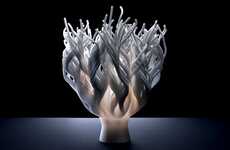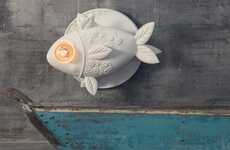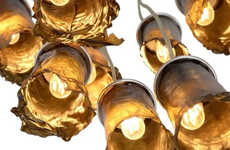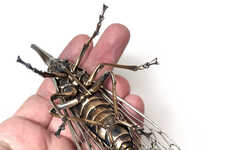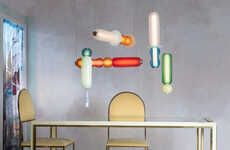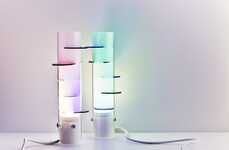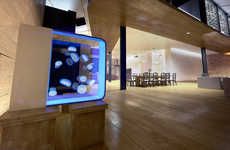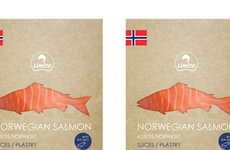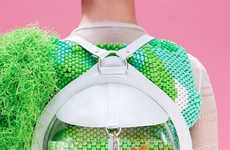
These Illustrations of Transparent Fish are Made of Neon Lights
Michael Nieto — December 31, 2013 — Art & Design
References: faculty.washington.edu & gizmodo
These pigmented transparent fish creatures are photographed with neon lighting. The photography series created by Adam Summers showcases a narrow division between art and science in detailed fish anatomy. These sea creatures are displayed in colorful neon lighting to show fine detail of their anatomical structure and vertebrate. The project series was developed within the School of Aquatic and Fisheries Sciences along with the director of Comparative Vertebrate Biomechanics Lab.
These images show an educational understanding of how fish move and how their physical structure components are in fine detail. The fish used for these photographs are deceased where they can be dissected to explore their remains. Adam Summers shows an interesting vision of transparent fish where he strives to explore the beauty and refined detail of these extraordinary sea creatures.
These images show an educational understanding of how fish move and how their physical structure components are in fine detail. The fish used for these photographs are deceased where they can be dissected to explore their remains. Adam Summers shows an interesting vision of transparent fish where he strives to explore the beauty and refined detail of these extraordinary sea creatures.
Trend Themes
1. Transparent Fish Art - Opportunity for artists to explore the combination of transparency and pigmentation in their artwork through the use of neon lighting.
2. Artistic Science Fusion - Potential for merging art and science to visually depict intricate anatomical structures, offering a new way to appreciate scientific knowledge.
3. Anatomical Transparency - Growing interest in showcasing transparent anatomical structures of different organisms, leading to unique artistic representations.
Industry Implications
1. Fine Art - Artists in the fine art industry could incorporate the concept of translucent pigmented fish art into their work, creating visually stunning and thought-provoking pieces.
2. Science Education - Educational institutions and publishers could leverage the popularity of translucent pigmented fish art to enhance learning materials, providing engaging visual aids for studying anatomy and biology.
3. Photography - Photographers specializing in underwater and natural subjects could explore the technique of using neon lighting to capture the intricate details of transparent fish and create captivating images.
5.1
Score
Popularity
Activity
Freshness


